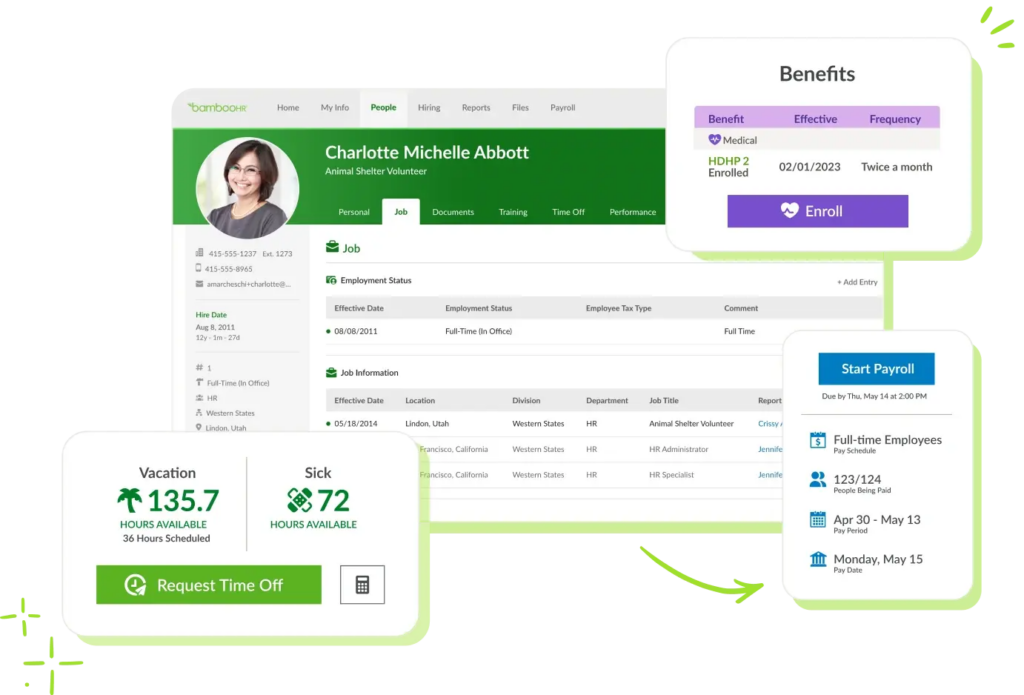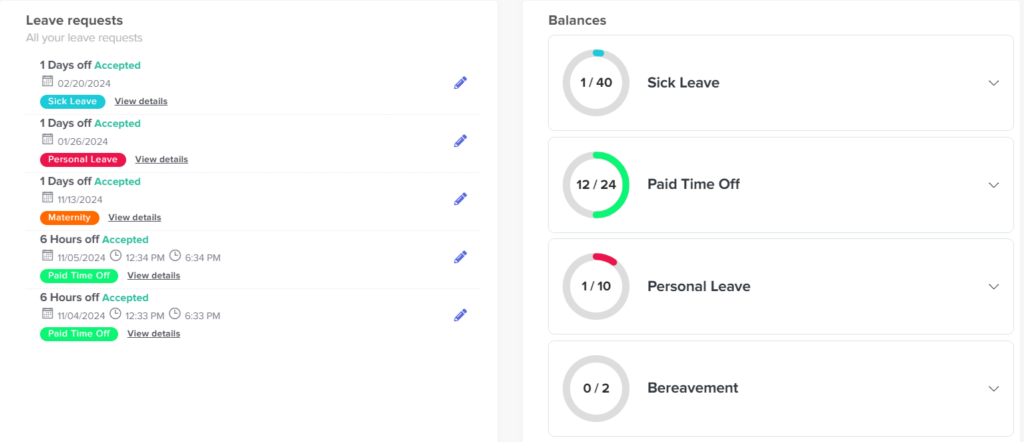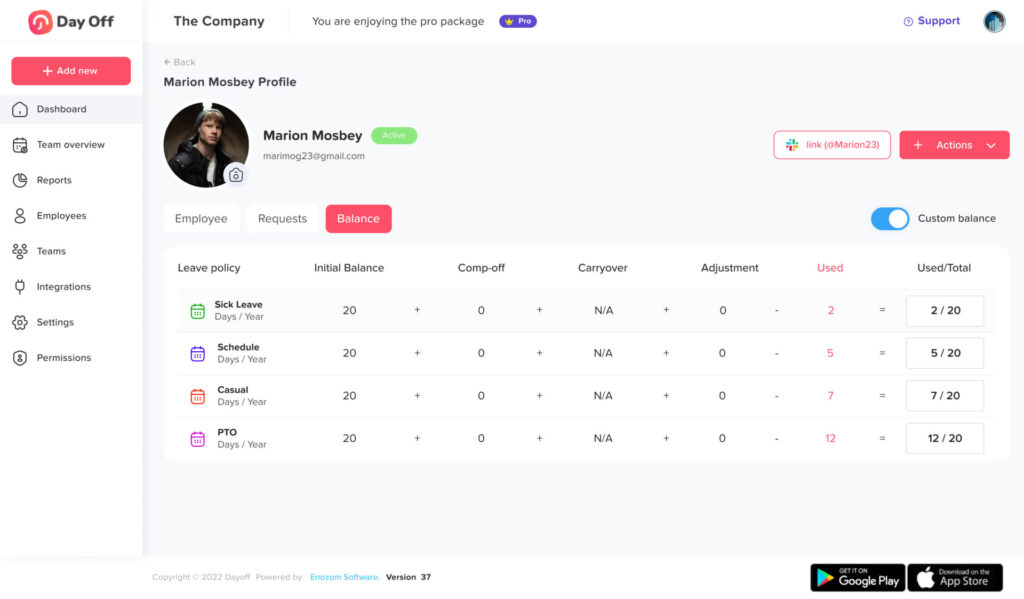In today’s rapidly changing human resources landscape, the adoption of technology to enhance operational efficiency, manage employee databases, and boost employee engagement is increasingly critical. As we move into the year 2024, the interest from small and medium-sized enterprises (SMEs) in discovering affordable solutions to address their HR-related challenges is more pronounced than ever. The market has risen to the occasion, offering an array of free HR software solutions tailored to accommodate the varied requirements of different businesses, all without imposing additional financial burdens. In this article, we are excited to introduce an expertly selected collection of the top free HR software solutions for 2024.
1. Day Off

Day Off leave tracker shines brightly in the constellation of free HR software by providing an intuitive platform that simplifies the management of leave requests, employee records, and enhances overall workforce engagement. As small and medium enterprises navigate through the complexities of human resource management, the need for cost-effective, efficient solutions has never been greater. The response from the software market has been overwhelmingly positive, presenting a wealth of options that cater to the diverse operational needs of businesses, all while keeping budget constraints in mind.
Key Features:
- Leave Management: Automates the process of handling leave requests, approvals, and tracking, ensuring a smooth workflow and reducing administrative burden.
- Calendar Integration: Offers an integrated calendar view that provides visibility into team availability, helping managers plan resources more effectively.
- Real-Time Notifications: Keeps everyone in the loop with instant notifications on leave requests and approvals, fostering a transparent and communicative work environment.
- Reports and Analytics: Generates insightful reports on leave patterns, absence rates, and more, aiding in informed decision-making and policy adjustments.
Ideal For: SMEs looking for a straightforward, easy solution to manage leaves and absences efficiently.
2. Zoho People

Zoho People, part of the extensive Zoho suite, offers a robust free tier that’s ideal for small businesses aiming to streamline their HR processes. It covers a broad spectrum of HR functionalities, including employee self-service, leave management, and time tracking.
Key Features:
- Self-Service Portal: Empowers employees to update their personal details, apply for leaves, and check their leave balances independently.
- Attendance Tracker: Simplifies the process of recording and monitoring employee attendance, supporting both web and mobile check-ins.
- Performance Management: Facilitates performance appraisals and feedback collection, helping companies nurture and develop their talent.
3. Bitrix24
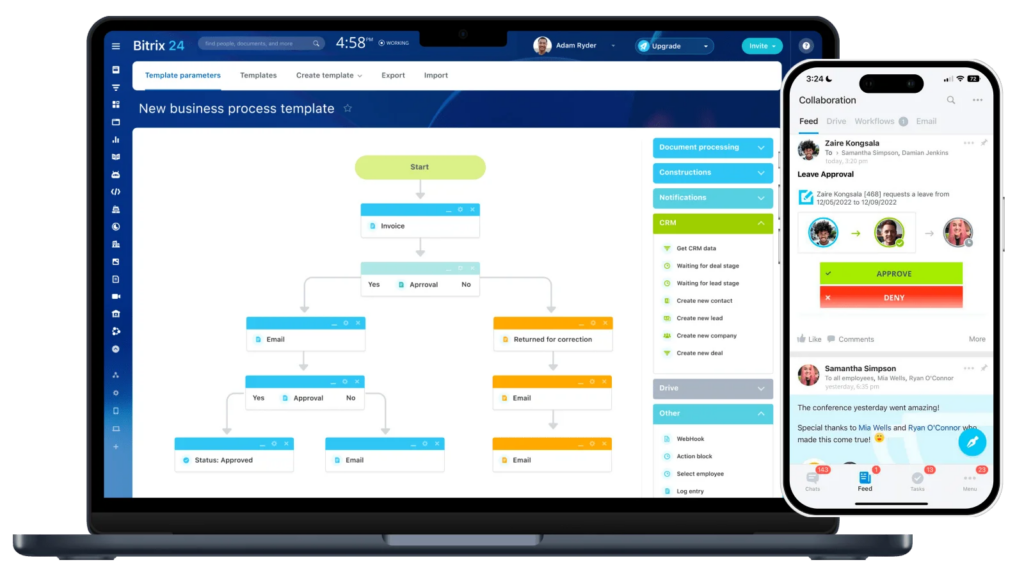
Bitrix24 offers a unique combination of HR tools, collaboration features, and CRM functionalities, making it a versatile choice for businesses looking to manage their workforce and customer relations on a single platform. Its free version supports unlimited users, which is a significant advantage for growing companies.
Key Features:
- Collaboration Tools: Includes chat, video conferencing, and document sharing to facilitate communication and teamwork.
- HR Management: Covers basic HR needs such as leave management, work reports, and directory services.
- CRM System: Integrates customer relationship management features, enabling businesses to track interactions and sales with clients.
4. OrangeHRM
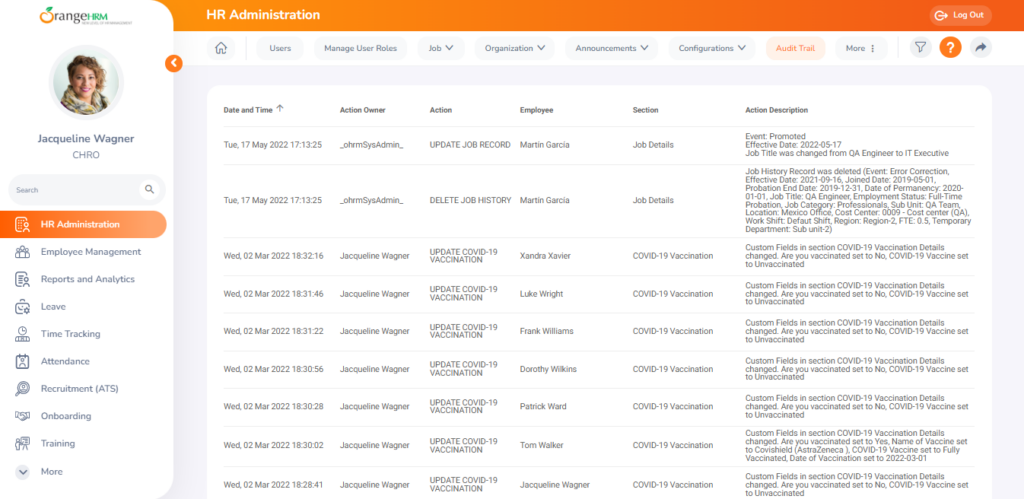
OrangeHRM is one of the oldest and most respected names in the HR software market, offering a free, open-source version that’s highly customizable. It’s particularly well-suited for companies with the technical know-how to tailor their HR system to their specific requirements.
Key Features:
- Leave and Attendance Management: Provides comprehensive tools for tracking leave balances, holidays, and attendance records.
- Employee Self-Service: Allows employees to view and manage their personal details, leave requests, and performance evaluations.
- System Administration: Offers extensive options for system customization and integration with third-party applications.
5. Workable

Workable HRIS platform stands out for its comprehensive suite of HR tools designed to streamline hiring processes, from recruiting and applicant tracking to employee onboarding and performance management. As businesses seek streamlined and integrated solutions for their HR needs, Workable offers a robust system that supports SMEs in navigating the complexities of human resource management with ease and efficiency.
Key Features:
- Recruiting and Applicant Tracking: Simplify the recruitment process with advanced tracking capabilities, making it easier to attract, identify, and engage with top talent.
- Employee Onboarding: Streamline the onboarding experience for new hires with customizable checklists and automated task assignments, ensuring a smooth transition into the company.
- Performance Management: Facilitate continuous performance feedback and evaluations, empowering businesses to support and develop their workforce effectively.
Ideal For: SMEs seeking a comprehensive HR solution that not only focuses on efficient employee management but also emphasizes the recruitment and development aspects of HR, ensuring a well-rounded approach to human resources management.
6. BambooHR
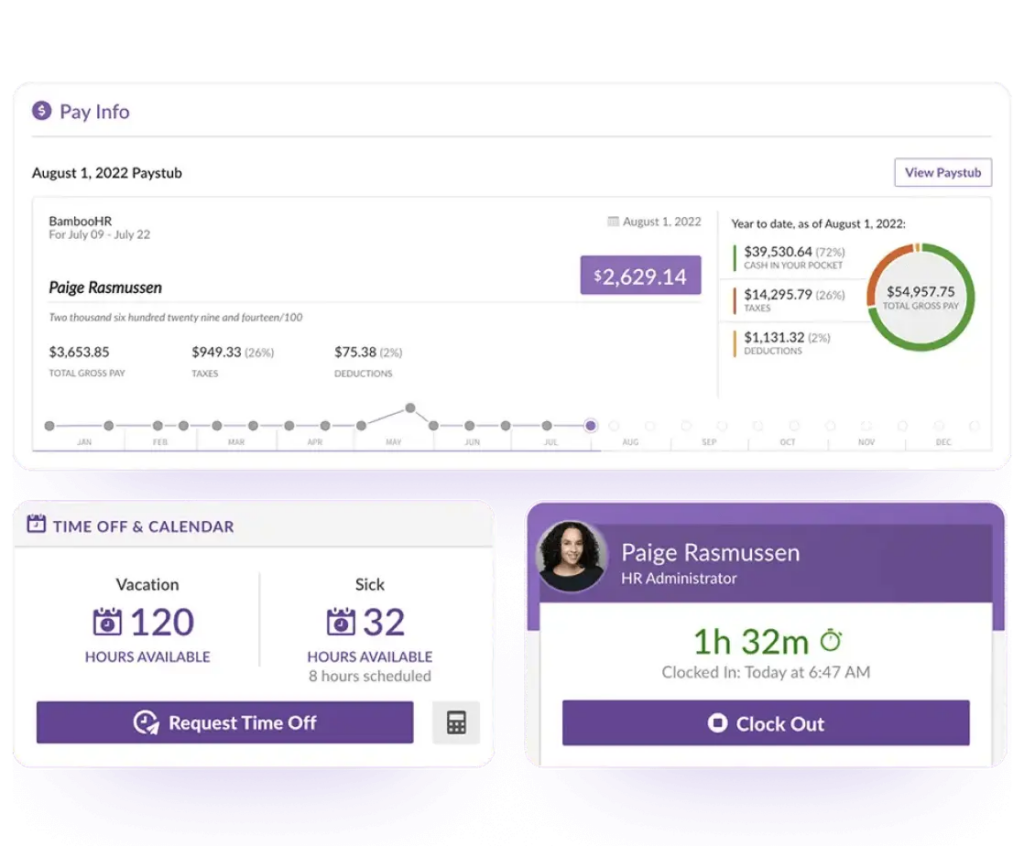
While BambooHR is best known for its comprehensive paid offerings, it also provides a free trial that allows businesses to explore its functionalities before committing to a subscription. This period can be particularly useful for small to medium-sized enterprises (SMEs) looking to test drive an advanced free HR software solutions.
Key Features:
- Centralized Employee Database: Keeps all employee information organized and accessible in one place, from personal details to job-related data.
- Efficient Onboarding: Streamlines the onboarding process with customizable preboarding packages and task lists to ensure a smooth welcome for new hires.
- Performance Management Tools: Facilitates ongoing performance assessments with features for setting goals, providing feedback, and conducting reviews.
Ideal For: SMEs interested in exploring the depth of HR functionalities offered by a premium service at no initial cost, and those planning to scale their HR software solutions as they grow.
7. Apptivo
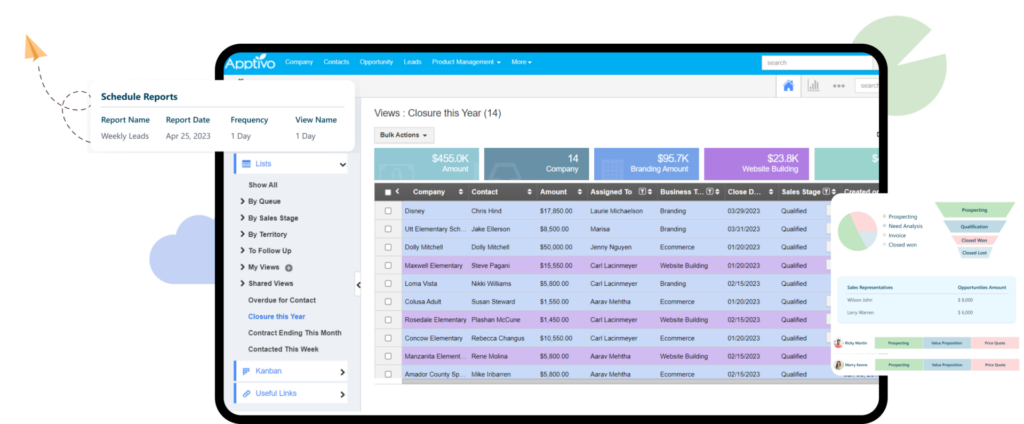
stands out in the free HR software market with its integrated approach, combining customer relationship management (CRM) functionalities with essential HR tools. This unique combination makes Apptivo an attractive option for businesses looking to manage both customer interactions and employee data within a single platform.
Key Features:
- Employee Information Management: Provides a centralized database to store and manage all employee-related information, making it easily accessible for HR tasks.
- Timesheet Tracking: Enables employees to record their working hours directly in the system, simplifying time tracking and payroll processing.
- Performance Reviews: Offers tools for setting up and conducting performance evaluations, allowing managers and HR professionals to track employee progress and provide constructive feedback.
Ideal For: SMEs that value the synergy between customer management and HR functionalities, looking for a versatile platform that can handle a wide range of tasks from employee management to customer engagement.
Conclusion:
The landscape of free HR software solutions in 2024 presents an impressive array of options for businesses seeking to enhance their human resources management. These platforms offer the tools necessary to streamline HR processes, from recruitment and onboarding to performance management and compliance, all while adhering to budgetary constraints. For small and medium-sized enterprises in particular, the ability to access such comprehensive functionalities without incurring additional costs is invaluable.
By carefully selecting the right HR software, businesses can not only optimize their internal operations but also improve employee satisfaction and engagement. The integration of these solutions into daily workflows enables HR professionals to focus on strategic initiatives that drive growth and foster a positive workplace culture.
As the HR technology market continues to evolve, it’s clear that the future holds even more innovative solutions that will further simplify and enhance the HR function. Companies that stay informed about and leverage these advancements will be well-positioned to navigate the complexities of modern HR management, ensuring their competitiveness and success in the ever-changing business landscape.








